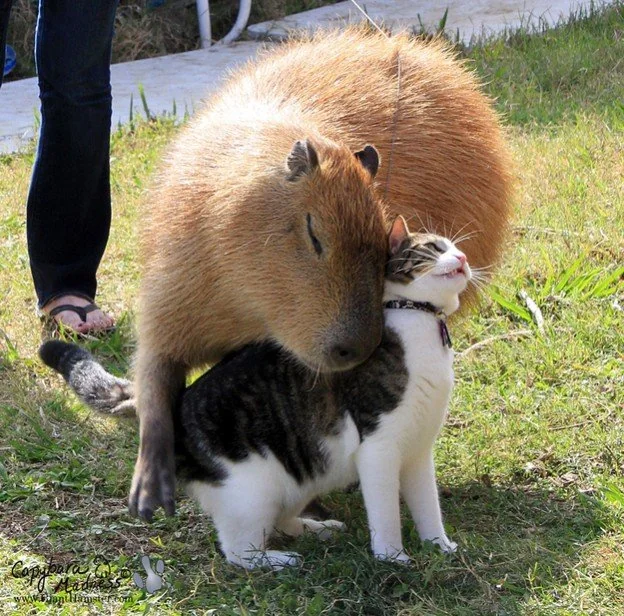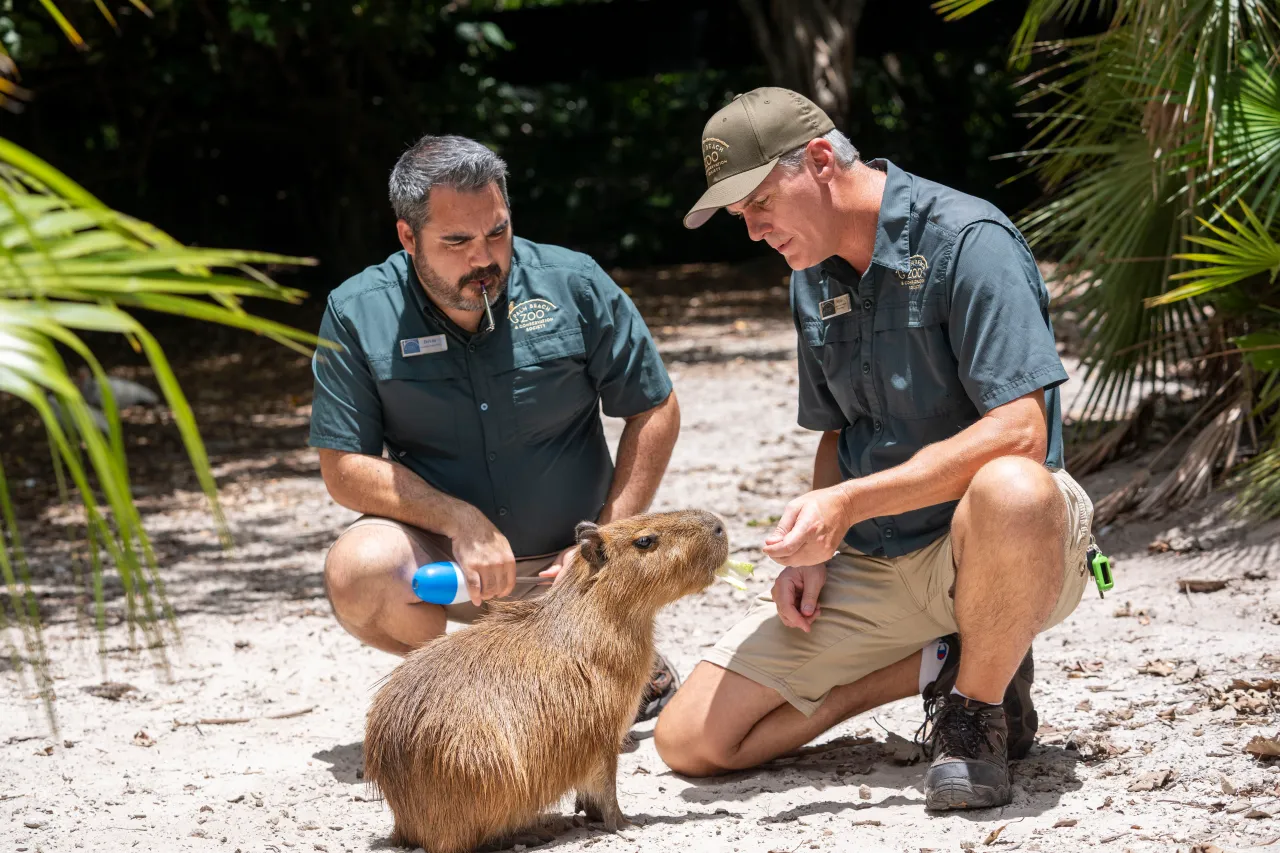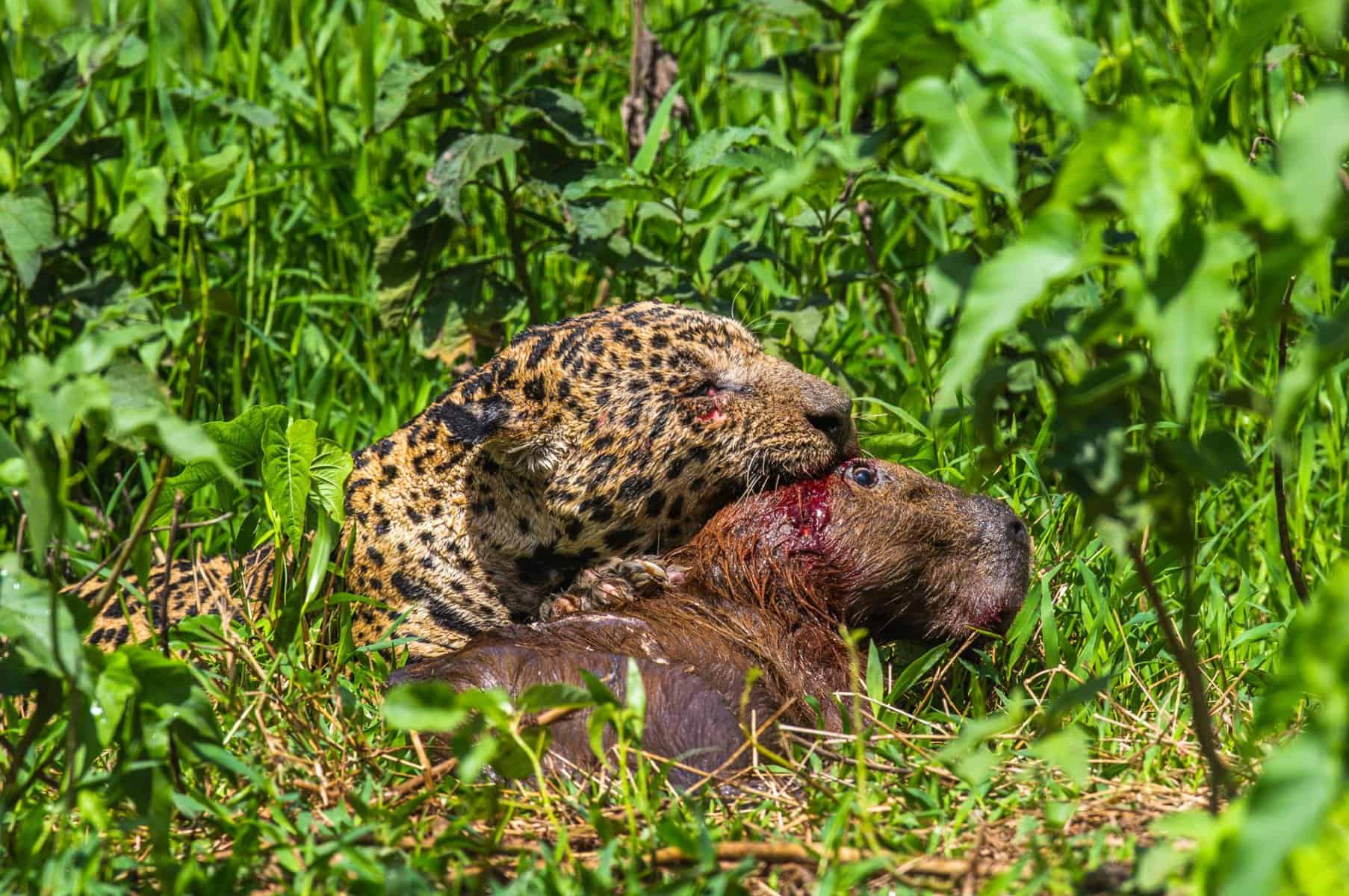The Ebb and Flow of Capybara Populations: What’s Happening in South America?
Capybaras, the largest rodents in the world, are native to South America and are known for their semi-aquatic lifestyle. They are often found near bodies of water, such as rivers, lakes, and marshes, where they can swim and forage for aquatic plants.
Capybaras are social animals and are often found in groups, known as herds, which can consist of up to 100 individuals. They are herbivores, feeding on a diet of grasses and aquatic plants, and are an important part of the ecosystem in which they live.
Capybaras are also known for their unique appearance, with a stocky body, short legs, and a blunt snout. They have a thick, coarse fur that is brownish-red in color, which helps to insulate them in their aquatic habitat. Their webbed feet make them excellent swimmers, and they are able to stay submerged for several minutes at a time. Capybaras are also known for their gentle nature and are often seen interacting with other species, such as birds and monkeys, in a peaceful manner.
Historical Population Trends
Historically, capybaras were abundant throughout South America, with a range that extended from Panama to Argentina. They were an important food source for indigenous peoples and were also hunted for their fur and oil.
However, as human populations expanded and their habitat was increasingly encroached upon, capybara populations began to decline. In addition to hunting and habitat loss, capybaras were also affected by diseases introduced by domestic livestock.
By the mid-20th century, capybara populations had declined significantly in many parts of their range. In some areas, they were even considered to be locally extinct. Efforts to protect capybaras and their habitat began to gain momentum in the 1970s, leading to the establishment of protected areas and conservation programs aimed at preserving their populations.
Current Population Status
Today, capybara populations are still facing threats from habitat loss, hunting, and disease. However, there have been some positive developments in recent years. In some areas, capybara populations have rebounded due to conservation efforts and the establishment of protected areas. In addition, there has been a growing interest in ecotourism centered around capybara-watching, which has provided economic incentives for local communities to protect their populations.
Despite these positive developments, capybaras are still considered to be at risk in many parts of their range. Their populations are fragmented, and they continue to face threats from human activities. In some areas, they are also affected by competition with domestic livestock for food and water. As a result, continued efforts are needed to ensure the long-term survival of capybaras in the wild.
Threats to Capybara Population
Capybaras face a number of threats to their population, including habitat loss, hunting, and disease. As human populations continue to expand, the natural habitats of capybaras are increasingly being converted for agriculture, urban development, and infrastructure projects. This has led to the fragmentation of their populations and the loss of important habitat for feeding and breeding.
In addition to habitat loss, capybaras are also hunted for their meat and fur. While hunting is regulated in some areas, illegal poaching continues to be a problem. Capybaras are also susceptible to diseases introduced by domestic livestock, such as foot-and-mouth disease and bovine tuberculosis. These diseases can have devastating effects on capybara populations, leading to declines in numbers and increased mortality.
Conservation Efforts
Conservation efforts aimed at protecting capybara populations have been ongoing for several decades. These efforts have focused on establishing protected areas, regulating hunting, and raising awareness about the importance of capybaras in the ecosystem. In some areas, local communities have been involved in conservation programs, which has helped to create economic incentives for protecting capybara populations.
One successful conservation initiative has been the establishment of wildlife corridors to connect fragmented populations of capybaras. These corridors allow capybaras to move between different areas of their range, which is important for maintaining genetic diversity and ensuring the long-term survival of the species. In addition, there have been efforts to reintroduce capybaras into areas where they were previously extirpated, with some success.
Impact of Capybara Population on Ecosystem

Capybaras play an important role in the ecosystems in which they live. As herbivores, they help to control the growth of aquatic plants and grasses, which can become overgrown without natural predators. This in turn helps to maintain the balance of the ecosystem and provides food and habitat for other species. Capybaras also serve as prey for predators such as jaguars and anacondas, helping to support the food web in their habitat.
In addition to their ecological role, capybaras also have cultural significance for many indigenous peoples in South America. They are an important part of local folklore and traditions and are often revered as symbols of fertility and abundance. As such, efforts to protect capybara populations are not only important for the health of the ecosystem but also for preserving cultural heritage.
Future Outlook for Capybara Population
The future outlook for capybara populations is mixed. While there have been some positive developments in recent years, such as population rebounds in some areas and successful conservation initiatives, capybaras still face significant threats from habitat loss, hunting, and disease. Continued efforts are needed to protect their populations and ensure their long-term survival in the wild.
One potential avenue for improving the outlook for capybara populations is through increased collaboration between governments, conservation organizations, and local communities. By working together, it is possible to develop sustainable management plans that balance the needs of both people and wildlife. In addition, there is a need for continued research into the ecology and behavior of capybaras to better understand their needs and how best to protect them.
Overall, the future outlook for capybara populations will depend on the collective efforts of all stakeholders involved in their conservation. By working together to address the threats facing capybaras and their habitat, it is possible to ensure that these unique animals continue to thrive in the wild for generations to come.




